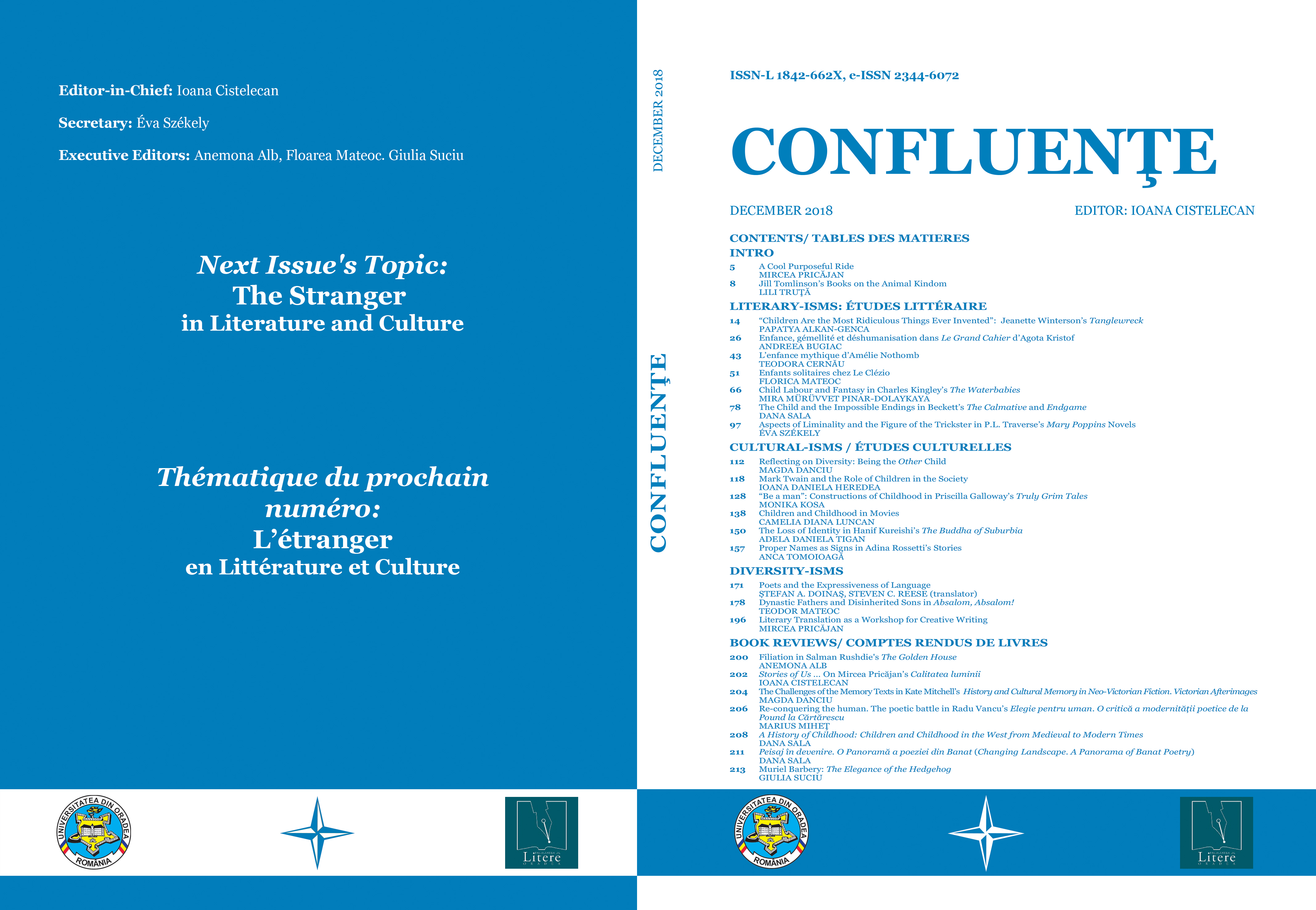Child Labour and Fantasy in Charles Kingsley’s The Water-Babies
Child Labour and Fantasy in Charles Kingsley’s The Water-Babies
Child Labour and Fantasy in Charles Kingsley’s The Water-Babies
Author(s): Mürüvvet Mira Pınar-DolaykayaSubject(s): Language and Literature Studies, Studies of Literature
Published by: Editura Universitatii din Oradea
Keywords: children's literature; fantasy; Charles Kingsley; child labour;
Summary/Abstract: Published in 1863, Charles Kingsley’s widely-acclaimed children’s novel The Water-Babies: A Fairy Tale for a Land Baby provides a picture of nineteenth-century England with its representation of the idyllic countryside set against the industrial towns and its emphasis on social injustices and harsh living conditions of the working class. The novel tells the story of a young chimney-sweeper, Tom, who, while being chased after by a group of people who accuse him of theft, falls into the river and transforms into a water-baby. In line with the Romantic attributes of childhood such as innocence and purity, Kingsley’s novel offers a pronounced critique on the issue of child-labour. The earlier parts of the novel represent child labour prevalent in the nineteenth century in a realistic manner, whereas the latter parts, where Tom’s underwater journey as a water-baby is depicted, bring a critical perspective to child labour and social inequality in an overly unrealistic style through the use of fantastic elements. Kingsley’s making use of fantastic elements in his novel not only helps him present such serious subject matters in a manner, which is more proper for the child reader but it also makes it possible for him to deliver his criticism in implicit ways. Therefore, the aim of this paper is to explore the ways in which Charles Kingsley’s The Water-Babies elaborates on child labour, and to argue that the use of fantastic elements in Kingsley’s novel offers an alternative way of looking at real social problems rather than escaping them.
Journal: Confluenţe. Texts and Contexts Reloaded
- Issue Year: 2018
- Issue No: 1
- Page Range: 66-77
- Page Count: 12
- Language: English

